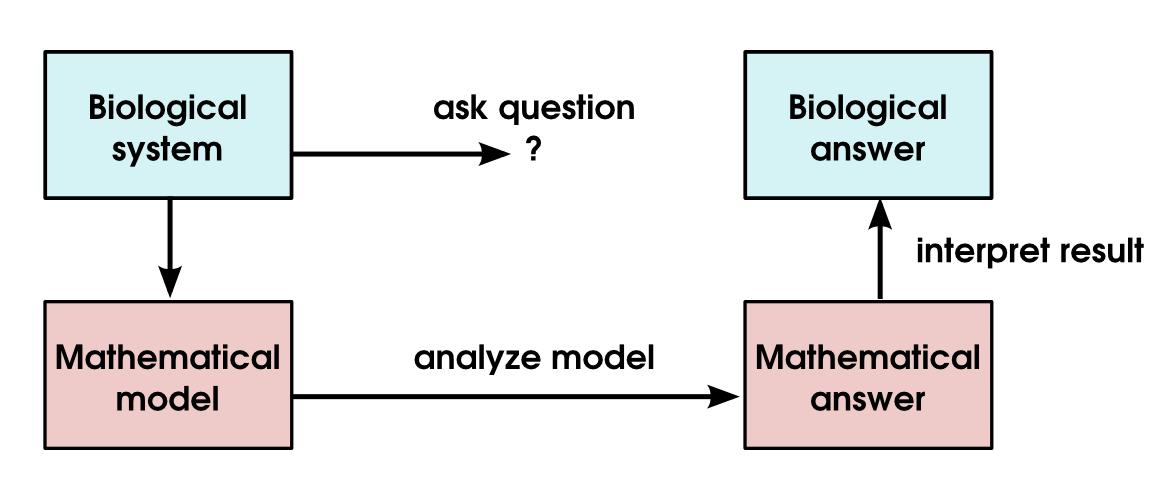Synthesis project
Group members:
Total points: 1
Grading rubric
To earn credit, a project must meet the following criteria.
| Criterion | Met | Not met |
|---|---|---|
| Demonstrate understanding of the strengths and weakness of each modeling approach. | ||
| Develop of convincing summary of how modeling can be useful in biology. |
| Project receives credit | YES | NO |
Submitting project
Submit the following by the due date.
- This cover sheet
- Answers to the project questions (typed or handwritten)
Background
In this project you will synthesize your understanding from the projects you completed throughout the semester. It may be helpful to refer to the mapping between biology and math schematic throughout:
